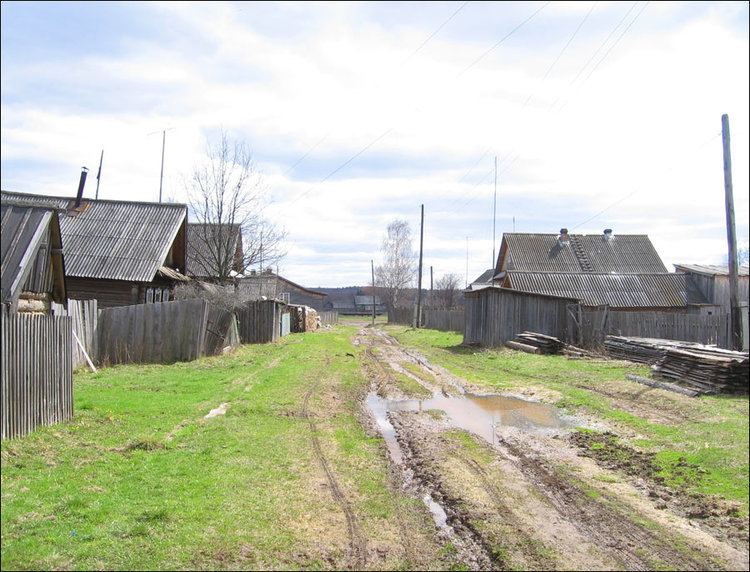Administrative center Kirov Area 120,800 km² | Federal district Volga Established December 5, 1936 Area rank 30th | |
 | ||
Points of interest Alexander Garden, Park im Kirova, Tryfonowski Monaster Zaśnięcia, Kirov State Circus, Vyatka Paleontological Museum Colleges and Universities Vyatka State University, Vyatka State University, Kirov State Medical Academy, Vyatka State Agricultur, Kirov Medical College | ||
Kirov Oblast (Russian: Ки́ровская о́бласть, Kirovskaya oblast) is a federal subject of Russia (an oblast). Its administrative center is the city of Kirov. Population: 1,341,312 (2010 Census).
Contents
- Map of Kirovskaya Oblast Russia
- Natural resources
- Hydrography
- History
- Administrative divisions
- Economy
- Transportation
- Politics
- Demographics
- Religion
- References
Map of Kirovskaya Oblast, Russia
Natural resources
The basis of the natural resources of the forest are (mostly conifers), phosphate rock, peat, furs, water and land resources. Extremely rare mineral volkonskoite. Widespread deposits of peat. Large stocks of non-metallic mineral raw materials: limestone, marl, clay, sand and gravel. In recent decades, in the east of the area revealed a minor recoverable oil reserves and deposits of bentonite clays. In the area is the largest in Europe Vyatsko-Kama deposit of phosphate rock. The area is rich in mineral springs and therapeutic mud. On the territory of Kumyonsky District is famous resort town of federal significance Nizhneivkino, which on treatment and rest come to residents of the Kirov region and many regions of Russia.
Hydrography
The region has a total length of 19753 River 66.65 kilometers. Northern Uvaly two separate river basins - the Severodvinsk and the Volga. Much of the area is occupied by the Vyatka River basin, a tributary of the Kama River in Tatarstan. At Kama is only in the upper reaches. To large flowing within the area are also river mole and Tansy, Luza, Cobra, Cheptsa.
The total number of lakes in the area of 4.5 thousand ponds With the total number of closed water area of 5.5 million. The largest lakes : Akshuben - 85 hectares, the Oryol is 63 hectares, Muserskoe - 32 hectares. The deepest area of the pond Lezhninskoe Lake - 36.6m.
History
Kirov Krai was established on December 7, 1934. It was transformed into Kirov Oblast on December 5, 1936 upon the adoption of the 1936 Soviet Constitution.
Administrative divisions
Kirov Oblast was formed on December 7, 1934. It is divided administratively into 39 districts, 6 cities under oblast jurisdiction, 13 town under district jurisdiction, 58 urban-type settlements, and 580 selsoviets.
Economy
Kirov Oblast is part of the Volga–Vyatka economic district located in the central part of European Russia in the Volga and Vyatka river basins. Its economic complex had already begun forming and developing before the Revolution, in large part because of the transfer points and trading posts located in Vyatka, which later led to the formation of large trading centers. Agriculture was the priority sector at first, but starting in 1940, there was an upsurge in development of an industrial complex, especially the engineering, metalworking, and chemical industries.
Kirov Oblast is part of the Volga–Vyatka agricultural zone, where more than half of the area sown in grain is located in Kirov Oblast itself. Agricultural land occupies 27% of the region's territory. The most important grain crops are winter and spring wheat and rye. Barley and oats are grown for fodder. Increased specialization in the production of more promising fodder crops like winter rye, barley, oats that are most suited to the Oblast's climatic conditions is anticipated in the future. Potatoes are also extensively cultivated.
Transportation
Politics
During the Soviet period, the high authority in the oblast was shared between three persons: The first secretary of the Kirov CPSU Committee (who in reality had the biggest authority), the chairman of the oblast Soviet (legislative power), and the Chairman of the oblast Executive Committee (executive power). Since 1991, CPSU lost all the power, and the head of the Oblast administration, and eventually the governor was appointed/elected alongside elected regional parliament.
The Charter of Kirov Oblast is the fundamental law of the region. The Legislative Assembly of Kirov Oblast is the province's standing legislative (representative) body. The Legislative Assembly exercises its authority by passing laws, resolutions, and other legal acts and by supervising the implementation and observance of the laws and other legal acts passed by it. The highest executive body is the Oblast Government, which includes territorial executive bodies such as district administrations, committees, and commissions that facilitate development and run the day to day matters of the province. The Oblast administration supports the activities of the Governor who is the highest official and acts as guarantor of the observance of the oblast Charter in accordance with the Constitution of Russia.
Demographics
Population: 1,341,312 (2010 Census); 1,503,529 (2002 Census); 1,692,655 (1989 Census).
2009 - 1.59 | 2010 - 1.59 | 2011 - 1.64 | 2012 - 1.81 | 2013 - 1.87 | 2014 - 1.89 | 2015 - 1.91 | 2016 - 1.94(e)
Ethnic Composition (2010):
Religion
According to a 2012 official survey 40.1% of the population of Kirov Oblast adheres to the Russian Orthodox Church, 5% are unaffiliated generic Christians, 1% are Orthodox Christian believers not belonging to churches or members of non-Russian Orthodox churches, 1% are adherents to Islam, 1% to the Old Believers. In addition, 33% of the population deems itself to be "spiritual but not religious", 13% is atheist, and 5.9% follows other religions or did not give an answer to the question.
